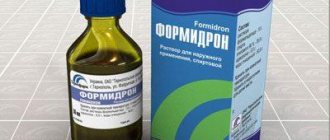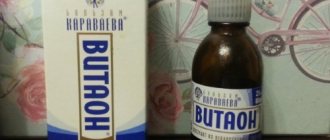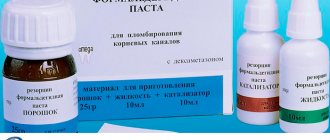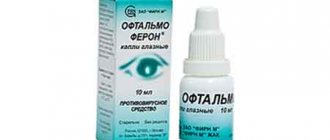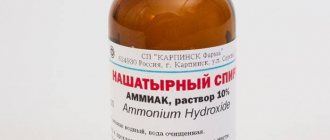A formaldehyde aqueous solution stabilized with methyl alcohol through partial oxidation is Formalin. Previously, the substance was used only to disinfect premises and various objects. After it was found that the product had a compacting effect on protein compounds, it began to be used as a tissue preservative. For histology, a neutral buffered solution is required. In addition, formalin is a good remedy for sweating of the armpits and legs and is used in veterinary medicine.
Indications
The product is used for medical purposes and as a disinfectant liquid for the following pathologies and situations:
- For obvious sweating
- For unpleasant foot odor
- For douching
- When disinfecting hands
- For the purpose of disinfection of medical devices, equipment, tools
- For the treatment of animals with carbamide poisoning
- When infected with non-spore-forming parasites in veterinary medicine
- For disinfection of livestock buildings
- When preserving biological pieces of material, serums, vaccines
- For embalming fabrics.
Formaldehyde poisoning
When poisoned with a drug, the patient feels a sharp burning sensation along the esophagus, as well as in the stomach. In addition, vomiting occurs, which is accompanied by bloody mass, dizziness, respiratory and cardiac problems occur. In some cases, a person may lose consciousness.
The lethal dose of the drug is 10-20 milliliters.
Upon autopsy of the patient, the following is observed: the mucous membrane of the esophagus, stomach, mouth is sufficiently compacted, fixed and has a brownish-gray color. The stomach and loops of the upper part of the small intestines in the form of a loop of a dense tube are gray on the outside, with well-defined folding.
In addition, there is severe swelling of the lungs and brain (which explains the above symptoms of poisoning), and congestion of the internal organs. Upon opening, a strong odor of Formalin is felt from the cavities and organs.
Medicinal properties
Formalin solution is made on the basis of formaldehyde stabilized with methyl alcohol. It has an antiseptic, deodorizing, cauterizing effect. Thanks to its ability to screw in protein compounds, it fixes tissues and reduces the secretory functions of epithelial glands.
In aqueous solutions, formaldehyde is in liquid form, which makes it easy to react even with weak reagents belonging to the group of aliphatic aldehydes.
Denaturing properties in relation to protein elements make it possible to create anatomical preparations and participate in the conservation of biological materials. Formalin 10% (neutral) solution is stored for a long time and is used in histology as the most common fixative. In aqueous solutions, formaldehyde decomposes over time into formic acid, acetone and methyl alcohol, which leads to a deterioration in the quality of fixation and precipitation. To restore the properties of the substance, it is necessary to heat it to 800C.
Formalin acts as an antiparasitic and anthelmintic agent. Application in veterinary medicine is to treat animals with urea poisoning.
Quickly eliminates spore subgroup strains, viruses and protozoa. Anthrax cells are destroyed during treatment and die within 2-4 hours. Gets rid of ticks, destroys eggs and larvae of parasites.
A 1% alcohol-based solution is prescribed for severe sweating and unpleasant foot odor.
A 0.5% composition is used to disinfect medical equipment.
FORMALIN
FORMALIN (syn. formol) is an aqueous 37-40% solution of formaldehyde containing up to 15% methanol (to prevent polymerization). F. is used for fixing histological, anatomical and microbiological preparations, in the manufacture of vaccines and serums, as a disinfectant for hand washing, and honey. tools, utensils, premises, clothing, as well as in the manufacture of various deodorants, means for washing the skin with excessive sweating, in the production of plastics, chemicals. fibers, for dressing seeds, tanning leather, etc. Formalin has a strong irritant, cauterizing and sensitizing effect, and is a hepato- and nephrotoxic poison (see Poisoning). There is evidence that formaldehyde (see Formic aldehyde) and F. exhibit embryotropic properties and mutagenic and oncogenic activity. F. in industries associated with its production and use can cause acute and chronic poisoning.
F. is characterized by relative density at 18° [d]18 1.101 -1.076
4 18
and refractive index at 18° [n]^
1.3766 -1.3776, it is a colorless transparent liquid with a pungent odor, the pH value ranges from 2.8 to 4.0. Sometimes in F. the appearance of a white precipitate of paraformaldehyde, a dimer of formaldehyde, is noted; the precipitate dissolves when water is added. F. is determined using its ability, characteristic of all aldehydes (see), to reduce silver salts (see), that is, to give the so-called. silver mirror reaction, and color the fuchsinsulfur solution red (Schiff reaction).
F. is part of lysoform (Lysoformium), a soap solution of formaldehyde (formalin 40 parts, potassium soap 40 parts, 95% ethyl alcohol 20 parts), used for douching in gynecology. practice (1-4% aqueous solutions), for disinfection of hands and premises (1-3% solutions). To wipe the skin with excessive sweating, use Formidronum - a liquid containing 10 parts of formaldehyde, 50 parts of water, 39.5 parts of 95% ethyl alcohol, 0.5 parts of cologne, or formaldehyde ointment (Unguentum Forma -lini), composed of boric acid (5 g), salicylic acid (2 g), formalin (15 g), glycerin (14 g), polyethylene oxide (62.5 g), fragrance (1.5 g). The ointment has a white color and a faint odor of F. and fragrance.
In industry, F. is used as a source of formaldehyde, convenient for transportation and storage.
The use of formalin in histological techniques and anatomy. F.
in its pure form, as well as with the addition of a number of salts, it is a universal fixative. In addition, F. is part of many complex fixing liquids: Zenker-formol, alcohol-
formol, liquids of Orta, Rego, Ramon y Cajal, etc. It is believed that the fixing properties of F. are based primarily on its ability to combine with proteins and denature them. F. solutions are usually prepared with tap water, which partially neutralizes the usual acidic reaction of F. For most methods of tissue staining, F.'s acidity is not harmful, and for certain methods of studying nervous tissue it is even desirable. However, F. is less suitable for gistol. detection of iron, glycogen, to study the fine structures of the cell nucleus, as well as when using stains with azure-eosin. When using formalin with a pH below 6.0, a brown “formalin pigment”—acidic formalin hematin—appears in tissues, especially those rich in blood. This pigment can be removed by treating the material with 1% ammonia or caustic potassium in 70% alcohol or 3% hydrogen peroxide. To improve the perception of color by tissues, as well as to prevent the appearance of “formalin pigment,” F. solutions are neutralized. To do this, pour a 2-3 cm thick layer of chalk or magnesia onto the bottom of the bottle with F. and shake the liquid periodically. After a day, the pH value rises to 6.3—
6.5. F.'s neutralization is controlled using indicators - litmus papers or by adding 0.1% neutral red solution to the solution (the appearance of an orange-yellow color indicates the achievement of neutral pH values). Complete fixation of pieces of tissue up to 2 cm thick in a 10% F solution at room temperature occurs in 1-2 days, in a 2% F solution at a temperature of 55° - within 3 hours. The more concentrated the F solution, the more significant the compaction of the fixed tissues. Very concentrated solutions delay fixation, causing a sharp compaction of the surface layers of the pieces of tissue being fixed. When fully fixed, a piece of tissue on the cut has a uniform gray-brown color due to the restoration of oxyhemoglobin in the blood into metahemoglobin. Material in F. can be stored for years. F. in its pure form, as well as in complex mixtures, is used for fixation and storage of organs and tissues intended for the manufacture of anatomical preparations (see Anatomical preparations) and for embalming corpses (see).
Formaldehyde as an occupational hazard. The main toxic active principle of F. is formaldehyde, a gas with a pungent, suffocating odor. Formaldehyde, when produced and used, is released into the air of industrial premises, is present in the exhaust gases of cars and emissions from power plants during incomplete combustion of organic fuel. Formaldehyde can be released from various building materials, fabrics and other products, in the production of which polymers containing formaldehyde were used (see Polymer materials, Synthetic resins).
Formaldehyde is a strong irritating poison that affects c. n. With. and causing dystrophic changes in parenchymal organs. In the body, formaldehyde is oxidized to form formic acid (see) and methyl alcohol (see). The threshold for the irritant effect of formaldehyde for humans is 2.4 mg/m3.
With chronic poisoning with formaldehyde in low concentrations, dyspeptic disorders, sweating disorders appear, rhinitis, pharyngitis, pulmonary emphysema, hron. bronchitis (often with an asthmatic component), hyperesthesia and hyperalgesia, damage to c. n. With. (mental agitation, headache, sleep disturbance, visual disturbance, ataxia). In severe cases, diffuse toxic pneumosclerosis, liver damage (jaundice) and kidneys (oliguria), the appearance of urticaria, rhinopathy, asthmatic bronchitis, allergic gastritis, Quincke's edema, dermatitis and eczema of an allergic nature, and the development of pulmonary heart failure are often noted. Nails are often affected (softening and brittleness are noted).
Treatment chronic. Formaldehyde intoxication is symptomatic with unconditional cessation of contact with the irritating agent and temporary transfer to another job.
In acute inhalation formaldehyde poisoning, the phenomena of damage to the conjunctiva (lacrimation, pain in the eyes) and the mucous membrane of the upper respiratory tract (sore throat, runny nose, sneezing and coughing, shortness of breath, suffocation) predominate, including pulmonary edema, toxic hepato- and nephropathy, general weakness , sweating, headaches, unsteady gait, facial skin is hyperemic, sometimes dizziness, a feeling of fear, and convulsions occur. After poisoning, an increase in sensitivity to F is noted.
When the poison enters inside - a wedge, a chemical picture. burns of the digestive tract, vomiting blood, thirst, toxic shock.
When formaldehyde solutions (even diluted to 0.015%) come into contact with the skin, hyperemia and infiltration of the skin can develop, sometimes with the formation of hard nodular thickenings and cracking of hardened surfaces.
And e r v a I help and non-emergency therapy. In case of eye irritation in case of F. poisoning, urgent rinsing with warm water, 2% sodium bicarbonate solution or isotonic sodium chloride solution, instillation is indicated
2-3 drops of 1% novocaine solution or 0.5% dicaine solution. If formaldehyde gets on your skin, you should immediately wash the affected area with 5% ammonia solution or water.
In case of inhalation poisoning with formaldehyde, it is necessary to immediately remove the victim to fresh air and provide inhalation of water vapor (a few drops of ammonia are added to hot water); in severe cases - alkaline or oil inhalations. For coughing attacks, take codeine or dionine orally. In case of spasm of the glottis, 0.5-1.0 ml of 0.5% atropine solution is injected subcutaneously; in severe cases, intubation (see) or tracheostomy (see), measures to combat pulmonary edema (see). In case of acute heart failure, it is necessary to warm the body, subcutaneously administer camphor, caffeine, corazol or cordiamine (1-2 ml). To stimulate breathing, it is recommended to administer cititone or lobeline. If poison is ingested, immediate and extensive gastric lavage is necessary.
2-3% solution of sodium bicarbonate, drinking a mixture consisting of 2% solution of ammonium salts with 10-20% urea, enveloping agents (raw eggs, mucous decoctions). Further treatment is symptomatic.
Work ability examination. In case of mild poisoning, a temporary transfer of the victim to another job is indicated; in case of severe poisoning, severe and persistent symptoms of intoxication, transfer to work without contact with formaldehyde and rational employment are necessary.
Measures ii r o f i l a k t i k i. For those working in contact with formaldehyde or phosphorus, the use of personal protective equipment is mandatory - filtering industrial gas masks of grade A, insulating hose gas masks (see), protective clothing (see Special clothing). Preventive measures include sealing equipment, improving equipment and technology. processes, introduction of remote control in production, installation of effective ventilation (see). Preliminary and periodic medical examinations (once every 12 months) are required for all workers in contact with formaldehyde (see Medical examination).
The maximum permissible concentration of formaldehyde in the air of the working area is 0.5 mg, m:\
Formalin in forensic medicine. Poisoning when F. is ingested is mainly accidental. During autopsies of people who died from F. poisoning, chemicals are discovered in the first hours after ingestion of large quantities of poison. burn of the mucous membrane of the mouth, esophagus and stomach (due to the fixing effect of F. on red blood cells, staining of necrotic tissues with blood pigment does not occur, and they have a white or pink-gray color), compaction, wrinkling of the stomach wall, and with a longer course of poisoning - also pronounced dystrophic changes in the kidneys, liver, and myocardium. Histologically, necrosis of the mucous membrane, and sometimes the muscular layer of the esophagus and stomach, edema and infiltration of the submucosal and muscular layers, and in some cases - phlegmonous inflammation of the entire wall of these organs are detected; necronephrosis, degenerative changes in neurons of the cerebral cortex, severe vascular congestion and perivascular hemorrhages in brain tissue.
At court-chem. identification F. it is isolated from biol. material by steam distillation. Qualitative detection of F. in distillate is based on reactions with concentrated sulfuric acid (when codeine or morphine is added, a red or blue-violet color is formed) or with concentrated sulfuric acid and a solution of fuchsinsulfuric acid (blue or blue appears - violet color; the color that develops in no more than 30 minutes is taken into account). Quantitative determination of F. is carried out by volumetric iodometric titration or colorimetric method (see Colorimetry), based on the interaction of F. with fuchsinsulfur.
Bibliography: Harmful substances in industry, ed. N.V. Lazarev and E.N. Levina, vol. 1, p. 505, L., 1976;
Kiseli D. Practical microtechnology and histochemistry, trans. from Hungarian, p. 54, Budapest, 1962; Lilly R. Pathohistological techniques and practical histochemistry, trans. from English, p. 36 and others, M., 1969; Merkulov G. A. Course of pathological techniques, p. 13 and others, L., 1969; Emergency care for acute poisoning, ed. S. N. Golikova, p. 284, M., 1977; Roberts J. and K a s e r i o M. Fundamentals of organic chemistry, trans. from English, vol. 1-2, M., 1978; Guide to forensic medical examination of poisonings, ed. R.V. Berezhny et al., p. 78, M., 1980; Handbook of occupational pathology, edited by * L, N. Gratsianskaya and V. E. Kovshilo, p. 4, L., 1981; Shvaikova M. D. “Toxicological chemistry, p. 83, M., 1975; Schreiner R. et al. Identification of organic compounds, trans. from English, M., 1983; Blum F. Der Formaldehyd ais antisepticum, Miinch. med. Wschr., S. 601* 1893.
N. G. Ivanov (gig.)4
II. F. Kaliteevsky (hist.), N. V. 11ro-kazova (biochemistry), A. F. Rubtsov (court).
Methods of application
Depending on the purpose, different concentrations of Formalin are used:
From sweating
To clean and rinse the skin for mycoses and unpleasant odor of the feet and armpits, a 0.5-3% composition is prescribed. Apply a thin layer for 30-40 minutes, then rinse with water. To prevent irritation, it is recommended to treat your feet no more than 1-2 times a week. Baths with the drug help a lot. It is necessary to start with low concentrations and gradually increase the dosage. The treatment period is about 2-3 months.
To sanitize shoes, the product is diluted with 30% acetic acid in equal proportions. For preventive purposes, cotton pads are moistened with a 25% solution and placed on insoles for a day. This helps eliminate sweaty feet and has a deodorizing effect.
Douching
For infectious vaginitis, vaginal catarrh, endometritis, 0.05% (20 g) of the substance is prescribed per 1 liter of water. Treatment is carried out once every 7 days for 2 months.
Disinfection
A 1% solution is intended for disinfection of equipment, equipment and objects. Medical threads and dressings are immersed in a 4% composition for 24 and 72 hours, respectively. A 0.5% product is used to treat fingers.
To disinfect premises, Formalin is sprayed using a spray bottle at the rate of 20 ml per 1 m3 of space with a duration of action of 5-7 hours. After which the room is ventilated, excess odor is removed with a liquid based on ammonia.
Regulatory requirements for the release of substances from various materials
The international community has resolved the issue of regulating formaldehyde vapor emissions in relation to formaldehyde-containing elements, defining three classes of safety requirements for such emissions: E1, E2, E3. For example, the most stringent class of requirements E1 has been established for furniture - that is, in the manufacture of materials for its production, the amount of methanal cannot exceed 10 mg per 100 g of dry raw materials for Russia, or 8 mg for Europe, respectively, and the release of toxic fumes must be insignificant.
The high content of formaldehyde resins in materials such as particle boards and fibreboards makes them more durable, but also highly toxic. Today, furniture manufacturers offer consumers another option for raw materials - MDF or medium-density fiberboard. The content of hazardous resins in them does not exceed the norm due to some specifics of the production process.
The maximum permissible amount of methanol in the air is also regulated by the standards of the international community and each specific state. For example, the requirements for Russia are established by Hygienic Standards. They indicate that a single concentration for populated areas should not exceed 0.035 mg per 1 cubic meter of air, and the permissible average daily concentration cannot be more than 0.003 mg per 1 cubic meter.
Histology
Making preparations involves fixing the material, creating sections, and staining the tissue. The essence of the process is protection from rotting and fermentation. An alcohol-based solution of Formalin is diluted with water in a concentration of 10 to 90 parts. Within 72 hours, the fabrics are impregnated and fixed with high quality. In stronger dosages, the pieces become denser and become covered with a crust, which prevents deep self-destruction. To avoid the release of formic acid, the product is neutralized with chalk. For accelerated research, the liquid is heated to 800C.
Chemical composition of formalin
How is formaldehyde obtained? The formula of this substance is CH2O. Formaldehyde (formic acid aldehyde), which is a colorless gas with a suffocating odor, turns into a clear liquid when cooled to -21 ° C. Its melting point is -92° C. Upon oxidation, it turns into formic acid. Formaldehyde is produced by exposing methyl alcohol to methyl alcohol in the form of vapor in the presence of catalysts. Of these, silver has proven to be particularly productive, although the industry uses copper, which is more readily available. The resulting distillation accumulates water, resulting in formaldehyde. It may contain impurities of acetone, acetic or formic acid. When formaldehyde is evaporated, the residue is a dense mass of polymers that are insoluble in cold water.
Overdose
In case of severe poisoning, lesions are observed due to the penetration of toxic vapors and elements into the blood. As a result of the cauterizing properties, tissue death develops.
In severe cases, severe intoxication with impaired renal and liver function was observed.
Exceeding the concentration when disinfecting premises or treating feet is accompanied by lacrimation, spasms of the respiratory organs, and burns of the integument. When ingested, drugs based on urea and ammonia act as an antidote. You cannot induce vomiting. Cleaning the digestive organs is carried out only with the help of a special probe.
In case of vapor poisoning, inhalation with ammonia is prescribed.
Storage and disposal rules
The product must be kept in a closed place, the bottles must be carefully sealed. Shelf life - no more than two years at temperatures up to 90 C.
The drug must not be poured into the sewer. In medical institutions there are special containers for biological waste. At home, it is recommended to first neutralize the solution using hydrogen peroxide, ammonia or copper hydroxide. After this, disposal can be carried out in carefully packed containers.
Precautions when working with formaldehyde
When purchasing this substance, do not forget how dangerous formaldehyde can be. What are these precautions? The guaranteed shelf life of this substance from the date of manufacture is 90 days. Formalin is sold in bottles, canisters, and barrels. The formaldehyde solution should be kept as far as possible from children. When formalin is taken orally, a burning sensation and pain appear in the esophagus and stomach. After this, vomiting of blood appears. Also, formaldehyde poisoning causes coughing, sneezing, hyperthermia of the eye mucosa, and shortness of breath. A person may experience convulsions, dizziness, and panic attacks. In some cases, formalin poisoning ends in death, which occurs due to respiratory paralysis and asphyxia. Lethal dose – 10-15 ml of 35% solution. The smell of formaldehyde in high concentrations can also cause an allergic reaction.
Analogs
Various preparations with antiseptic, antimycotic and disinfecting properties are prepared on the basis of Formalin:
Lysoform
Medical Lysoform, Ukraine
Cost: Spray 250 ml – 180-200 rubles. Size 1000 ml – 500-550 rub.
Lysoform is presented in the form of an antiseptic, which is used to treat the skin of the feet in case of infectious diseases, eliminates excessive sweating, and deodorizes. Used for disinfection of instruments and equipment. Consists of 40% formalin, 40% potassium soap solution, 20% alcohol.
Using the medication, douching is done and the burn areas are lubricated. The medicine disinfects lesions of the epidermis with exudate from furunculosis, eczema, and helps eliminate mycoses. For use only in diluted form.
The solution is yellowish, transparent. Bottled in plastic bottles with a sprayer of 250 ml. The second form of release is 1000 ml propylene cylinders, the kit includes a spray bottle. Each bottle has a label with instructions. The smell is pungent and specific.
Advantages:
- Doesn't dry out the skin and is gentle.
- Convenient to use bottle.
Flaws:
- Not prescribed for pregnant women and children.
- Cannot be applied to the face.
Formidron
JSC YaFF, Russia
Cost: Solution 50 ml – 20-25 rubles. 100 ml – 30-35 rub.
The drug has an antiprotozoal and deodorizing effect, which determines its use for sweating. Thanks to the formaldehyde contained in the composition, it eliminates unpleasant foot odor and destroys mycotic spore cells. Used to disinfect shoes for preventive purposes. Contains the active ingredient, ethanol, water and fragrance.
To treat with the product, moisten a swab and treat the affected areas twice a day until the symptoms disappear. If irritation, rash, peeling, itching on the epidermis is observed, use should be stopped immediately.
Available in dark brown bottles of 50 and 100 ml. The liquid is clear, with a characteristic strong odor. The bottles are placed in cardboard boxes along with instructions. Each container is tightly closed with a polyethylene stopper and lid.
Advantages:
- Quickly eliminates unpleasant odor from feet and shoes
- Affordable price.
Flaws:
- May dry out skin
- Sometimes it causes a burning sensation when processed.
Rules for storing the drug in pharmacies and clinics
SanPiN 2.1.3.2630-10 regulates the rules for handling disinfectants. Formaldehyde is stored in its original packaging at a temperature not lower than +9 °C, in a dry but well-ventilated area. At humidity up to 50%. The drug is stored on shelves or in cabinets made of metal or wood. The finishing in the room should not adsorb foreign substances. Formaldehyde is kept in its original packaging with a sealed lid.
After the expiration date, the drug is removed from general storage areas, neutralized and disposed of according to the rules of SanPiN 2.1.7.2790-10.
Transportation of formaldehyde is regulated by Article 4 of Federal Law No. 61-FZ and is carried out by special transport, subject to the optimal regime in which the product does not lose its chemical and physical properties.
The rules for handling and transportation of technical formalin are described in GOST 1625-89. In this case, the product is stored in its original packaging or in a container that will ensure the safety of the solution. Keep it in a special warehouse that is heated. The temperature should be within +10...+25 °C, humidity 50-60%.
Technical formalin is transported in a covered vehicle according to the rules for the transportation of goods that are accepted for this transport.
